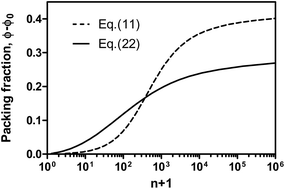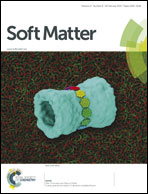Tap density equations of granular powders based on the rate process theory and the free volume concept
Abstract
The tap density of a granular powder is often linked to the flowability via the Carr index that measures how tight a powder can be packed, under an assumption that more easily packed powders usually flow poorly. Understanding how particles are packed is important for revealing why a powder flows better than others. There are two types of empirical equations that were proposed to fit the experimental data of packing fractions vs. numbers of taps in the literature: the inverse logarithmic and the stretched exponential. Using the rate process theory and the free volume concept under the assumption that particles will obey similar thermodynamic laws during the tapping process if the “granular temperature” is defined in a different way, we obtain the tap density equations, and they are reducible to the two empirical equations currently widely used in literature. Our equations could potentially fit experimental data better with an additional adjustable parameter. The tapping amplitude and frequency, the weight of the granular materials, and the environmental temperature are grouped into this parameter that weighs the pace of the packing process. The current results, in conjunction with our previous findings, may imply that both “dry” (granular) and “wet” (colloidal and polymeric) particle systems are governed by the same physical mechanisms in term of the role of the free volume and how particles behave (a rate controlled process).


 Please wait while we load your content...
Please wait while we load your content...